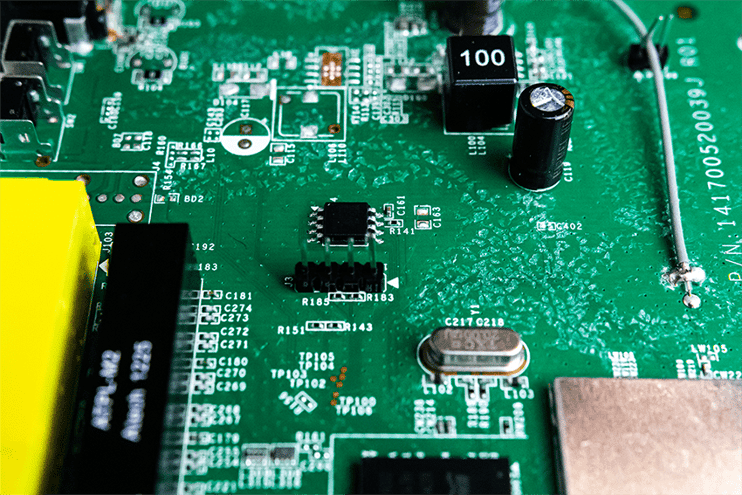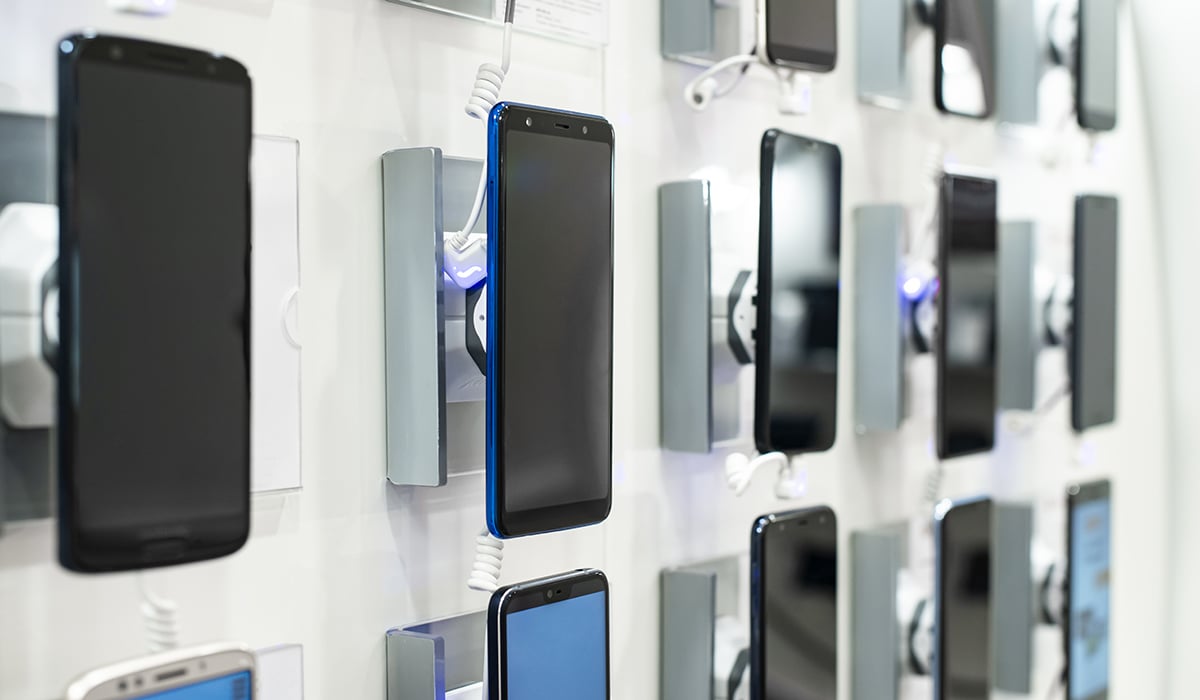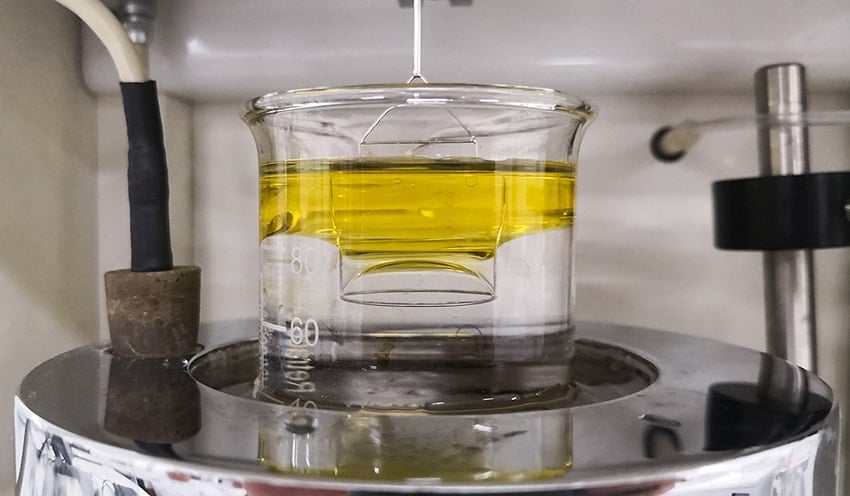Electronic components consist of many exposed and delicate pieces that leave them vulnerable. A lot is relying on these fragile parts to function without fail. From implantable medical devices to navigational equipment and from sensor packages in cars to cell phones, the manufacturers of electronic assemblies have a powerful mandate to ensure the reliability of their components.
Conformal coating is one of the ways to protect electronic assemblies from harsh environments. These coatings are typically a polymeric material that seals off the electronics from contaminants and environmental factors that can lead to damage and failures.
In order for these coatings to be effective, they have to be a uniform covering of the entire component. Absolutely no moisture, fluid, or outside impurity can be permitted to touch the electronics. These can lead to rusting, oxidation, dendrite growth, or other corrosion. The conformal coating also guards against things like dust, dirt, and even insects.
But who validates the protector? Since conformal coatings are so vital to electronics manufacturing, there need to be ways to ensure that these coatings are free from failure themselves.
That involves understanding how the cleanliness of electronic components can ensure that the conformal coating will be able to do its job.
What is Conformal Coating?
To better understand what needs to take place for the conformal coating to work, we need to understand better what conformal coating is.
Conformal coating is the process of encapsulating electronic assemblies, such as printed circuit boards, electronic circuitry, and components, with a polymeric shield that forms directly around all of the components.
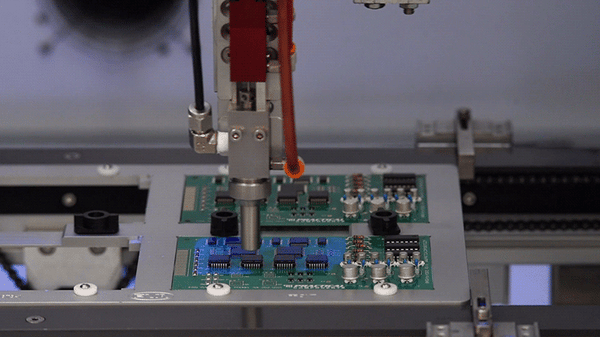
The materials used to coat the electronics are usually Parylene, epoxy, or (sometimes) acrylic. If these materials do not fully encase the boards and components, they can be extremely difficult to remove to try to preserve the electronic materials underneath. Fixing a conformal coating often involves heavy solvents and thermal, mechanical, or microabrasion techniques. Rework of just these components themselves can be very costly, but the rework and recalls their failure can cause in cars or medical devices can have an astronomical cost.
Common Conformal Coating Failure
There are dozens of terms for the types of coating failures that are commonly seen on PCBs. Many are variations on the same kind of issues. Each one is an adhesion failure that can lead to the board shorting due to corrosion, physical damage, or other issues the conformal coating is supposed to protect against.
These include:
- Blistering - a cracking that can happen within the coating or at the interface with the surface of the board.
- Blushing - the coating looks blotchy, milky, or cloudy due directly to contamination or uneven coating.
- Capillary Flow - this is where the coating pulls back, wicks, or runs from particular areas of the board due to an inability to bond successfully to those spaces. This leaves a patchy finish to the board.
- De-wetting - similar to capillary flow, this is when the coating “refuses” to fully coat or “wet” on a surface that it has otherwise been evenly applied to.
- Delamination - areas where the conformal coating has lifted from the surface of the board below it.
- Discoloration - a change in the color of the coating that can cause a change in how temperatures affect different parts of the board, or this can also make identification of the components below difficult.
- Fish Eyes - localized de-wetting that manifests as little craters on the surface of the coating.
- Orange Peel - the coating has an uneven and textured surface somewhat similar to fish eyes.
All of these versions of adhesion failure are preventable and, with a fully controlled adhesion process in place, can be completely eliminated.
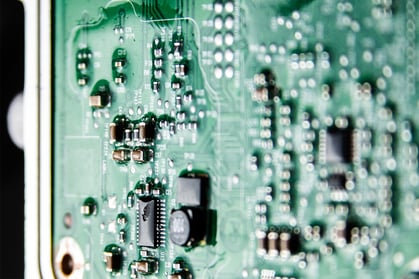
How to Control Your Adhesion Process
To manage any adhesion process, regardless of the product being manufactured, three things need to be controlled:
- The composition of the adhesive, coating, ink, or paint
- The application/deposition and curing of the adhesive, coating, ink, or paint
- The quality of the bond surface(s)
There are a variety of coatings that can be used in PCB and electronic component encapsulation. There are experts ready and willing to help make sure you choose the best one for your application and the material you’re coating. Finding a compatible coating for a substrate (the material being bonded to) is essential, and the manufacturers of the coatings are very capable of pairing you with the best coating for your job. So, that’s number 1 on the list.
Conformal coatings are typically applied through an automated operation that carefully ensures the deposition and curing are controlled and consistent. That’s number 2.
With these two elements well in hand, manufacturers are on their way to full adhesion process control. But, it’s the last piece that leads to a majority of the failures listed above. Ensuring that the surface of the electronic components is sufficiently, evenly, and measurably clean enough to be coated is the last piece of the puzzle. The missing piece, you might say.
Accomplishing this crucial aspect of process control requires a reconsideration of a few things:
- what is contaminating the surfaces
- where is the contamination coming from
- how do you evaluate a properly prepared surface
What Does Clean Mean?
Rethinking what is contaminating surfaces means rethinking what clean means. To ensure a strong, reliable adhesive bond (which is what a conformal coating is), cleanliness needs to be understood as chemical cleanliness. The surface of the components needs to be chemically compatible with the coating.
Most electronic components are made of polymers that have what is called intrinsically low energy, i.e., they do not want to grab onto the coating; they’d rather just be left alone. They need to be converted into a high-energy surface through treatment like plasma, corona, or flame. These methods create chemically reactive sites on the surface that are eager to bond with the coating and hold on with all their might.
So, when we talk about contamination, we might not be referring explicitly to visible crud on the surface. More often than not, the kind of failures we’re trying to avoid is caused by a surface that appears clean by all available metrics but has a microscopic layer of molecules that the coating will not want to bond to.
To fight against this kind of contamination, you need to reevaluate your entire process. Take a look at how optimized each step is. How clean are the parts before they are assembled or before they are cleaned? When are they cleaned, and how long after their cleaning do they move on to the next step in the process? Is the cleaning sufficient for the energy level intrinsic to your materials? How do you know?
Test the Cleanliness of Your Surface: ROSE Test and Beyond
There are common cleanliness tests, such as the ROSE test and other ion chromatography test methods, that indirectly measure the amount of ionic contamination on the surface of components. The ROSE test, or resistivity of solvent extract test, is done by dipping a board or rinsing a board with a solvent and then measuring the amount of ionic particulate in the solvent after the wash. This is a fine test of a very narrow kind of contamination which is not responsible for a majority of the kinds of failures we are discussing here. The ROSE test only measures soluble ionic contaminants and doesn’t look at organic contaminants whatsoever, which are much more pertinent to the reliability of adhesive bonds. As such, this test is not a useful process control method. Even the Institute of Printed Circuits (IPC), which develops standards and recommendations for electronics manufacturing, has amended the J-STD-001G to say that the ROSE test is insufficient as a process control method.
The best way to ensure a surface is clean and chemically ready to bond to or to ensure that all of the parts of the adhesion process are fully optimized, efficient, and effective is to use an objective, direct and in-line inspection of the chemical state of the surface.
Using a water contact angle with a rapid measuring device that can be integrated directly into the production line is your best defense against conformal coating failure. This is also an excellent method of ensuring that a coating is truly uniform. An uneven coating does not necessarily mean that it was applied improperly. Often, an uneven coating is caused by chemical contamination on the surface that makes the coating avoid fully covering certain areas.
Process checks done by an automated, quantitative measurement will tell you if real parts that will be coated downstream are prepared at each step along the way. Water contact angle measurements are sensitive to the kinds of organic contamination that cause the failures we’ve mentioned and make fast, reliable quality verification possible. This kind of inspection fills in that final gap in most adhesion processes. The missing puzzle piece is a reliable way of looking at the condition of the surface at every point in the adhesion process that could interfere with flawless coating. We call these places the Critical Control Points, and they need to be monitored so that failures are stopped and prevented in the future.
Building a Predictable Adhesion Process
We talk a lot about processes at Brighton Science. We discuss the inter-relational dynamics of the constituent parts that make up the whole and how, if any one of those parts is not properly managed, the process as a whole is at risk of being unsuccessful. When talking about electronics, we can ostensibly be talking about every single manufacturing sector at once. Electronics are not an isolated category but a crucial piece of all industries. If the electronic components of a larger assembly fail, then the auto, medical device, or consumer product manufacturer is unable to provide the highest quality products.
Electronics manufacturers can ensure that the components they build and supply to other manufacturers are not weak links by protecting their components with conformal coatings. But that’s not where the story ends. To ensure conformal coatings are effective, cleanliness has to be controlled. It’s all part of building a better, more predictable adhesion process.
To learn more about how to create a process that has reliability built into it from the beginning, download our eBook: Guide to Adhesion Science for Flawless Manufacturing

